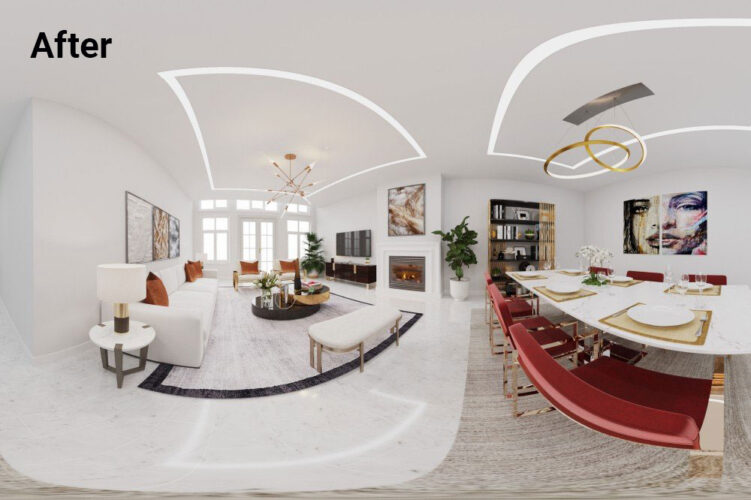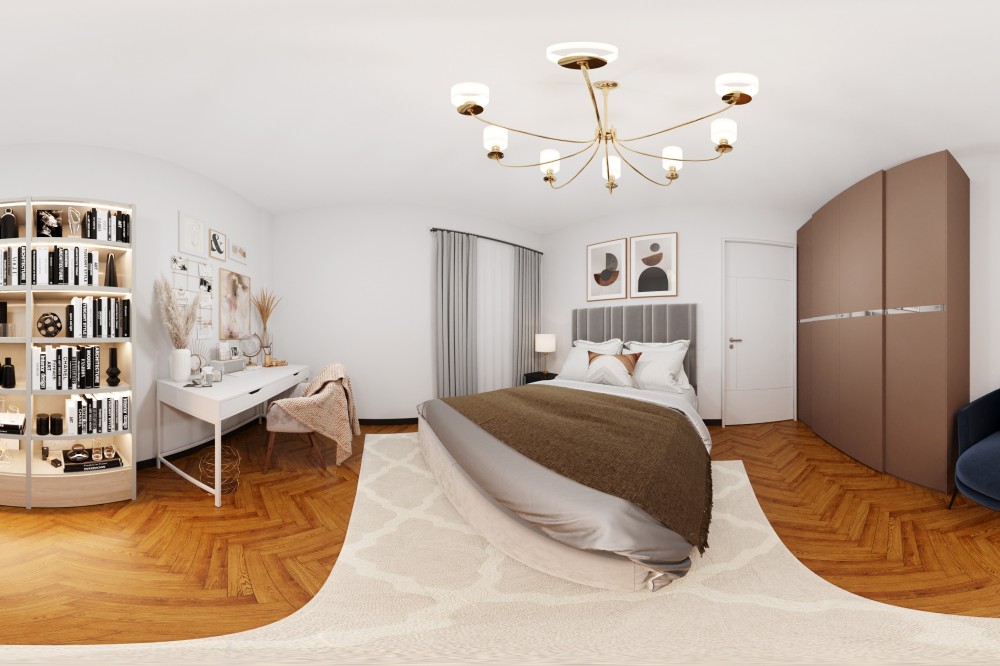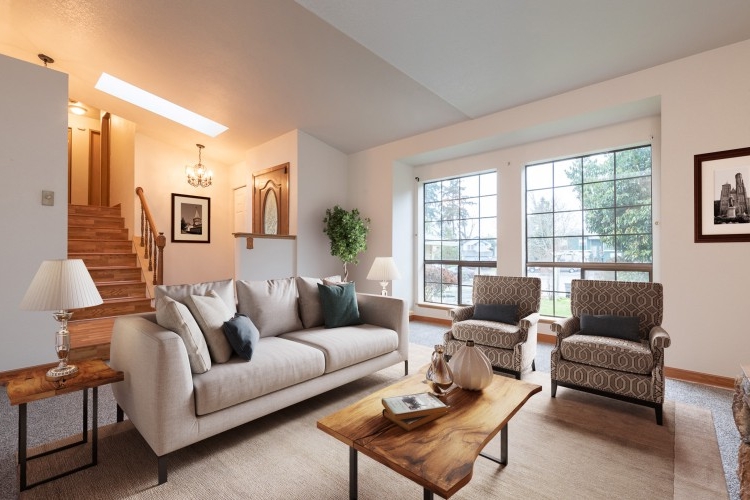HDR Real Estate Photography: Good or Bad?
HDR is an editing process that balances shadows and highlights, especially for interior photography. If you’ve never done HDR photos and don’t understand this type of presentation, we’re going to discuss how to do HDR, when to use it, as well as situations where HDR real estate photography looks bad.
What Is HDR Real Estate Photography?
In photography, HDR stands for High Dynamic Range, which is a type of editing process that involves combining bracketed photos with multiple exposures to broaden the difference between the darkest and lightest spots.
There are times when no matter how many times you adjust the camera settings, you won’t be able to capture all the highlights and shadows in one photo. Utilizing the best HDR software, a real estate photographer can blend several real estate images with varying exposure to get all details clearly.

Stereotypical HDR
You may see that some MLS real estate images have pastel-like colors, making them look unreal and give a false impression of an interior or a property.
Naturally-Blended HDR
Better than a stereotypical HDR image, naturally-blended HDR images provide an accurate representation of an interior by maintaining the original colors and details while only enhancing the brightness and accentuating shadows. An Arizona flat fee realtor shares that when real estate and interior photos look overly edited, potential real estate buyers can become skeptical of the listing and wonder how accurately the home is listed online. While some HDR is good, you don’t want to overdo it.
Over the years, most top real estate photographers have moved beyond simple HDR images. Some use HDR/Flash hybrid or have moved to LR/Enfuse or other several post-processing methods, which look more realistic than HDR photography.
Why Use HDR for Real Estate Photography?
The primary objective of using HDR in real estate photography is for the human eyes to see a property through an HDR shot accurately. Aside from that, there are many advantages to why a high dynamic range is a suitable technique for photographers.
- Save highlights and balance shadows: It can be challenging to balance the highlights when shooting interior photos of spaces with exterior views. For example, photographing a bedroom with a window view may have multiple light sources. With HDR photos, you can preserve the contours from window light while retaining the room’s vibrant colors.
- Increased details: Unlike shooting with a single exposure, HDR prevents a real estate photographer from losing image detail for important elements like fixtures or furniture. Likewise, you can enhance textures for sharpness and greater clarity.
- Overcome tricky lighting conditions: There are times when combining natural light and external lights can create complex lighting. Better than spending too long adjusting your lighting and camera position, an HDR composite image can counteract high contrast lighting in one image.
Downsides of HDR Photography
While a high dynamic range has benefits, HDR photos also come with some disadvantages.
- Time-consuming: Unlike basic retouching and post-processing, blending brackets into one HDR image takes a lot of time and patience, especially during your first few tries.
- Requires particular tools: As opposed to point-and-shoot digital cameras, some dedicated digital cameras or DSLR modern cameras have a bracketing feature or the automation of multiple exposures. A real estate photographer would also need post-processing tools like Photoshop to blend HDR photos.
- Tendency to look fake: While it can be easy to fall into the rabbit hole of heavy editing, this, unfortunately, results in unrealistic details, colors, and vibrancy in your real estate images.
Considerations Before Doing HDR in Real Estate Photography
HDR photography can be beneficial for your real estate work when you have the right equipment, use the appropriate settings, and edit using the appropriate high dynamic range software. With that said, consider these factors before you think of bracketing an HDR image.
Right Equipment
- Camera: It’s ideal to choose a type of camera with a built-in bracketing mode to ensure that you get different exposures without sacrificing quality. In addition, it would be helpful if the camera has a full-frame sensor that can adapt to low-light conditions.
- Wide angle lens: A wide angle lens with a focal range of around 16mm to 34mm is perfect for capturing the whole room in the frame.
- Flash: There are times when natural light won’t be enough, yet a flash can further illuminate the same scene. Use a test shot to see if the natural light is right for you.
- Tripod: Since you have to blend at least 5 shots of the same scene, the photos must be as closely aligned as possible. When using a tripod, you can keep the camera and flash stable. A tripod can also retain the same height even as you control the camera’s direction.
- Remote trigger: Bracketing while handheld may cause motion blur, compromising the quality of your shots. Use a remote trigger to fire the shutter to ensure perfect alignment between all exposures of your frames and avoid motion blur.
Camera Settings
- Aperture: In general, HDR real estate photography requires keeping the aperture wide open so that you can let in more natural light. Choose the manual mode, then set the aperture between f/7.1 to f/16.
- Shutter speed: You would have more flexibility in shutter speed as this may depend on the aperture. However, shutter speeds between 1/60 and 1/2 of a second are best for bracketed images.
- ISO: If you can’t keep the ISO to around 100 to 400, you won’t get sharp and clear details. Going beyond that may result in image noise.
Post-Processing Software
Like in other kinds of photography, using an editing program is one of the best photography tips to see if a technique would work or not.
Hence, you must consider if you can use a photo editing software to create a realistic yet enticing HDR image. Adobe Photoshop and Lightroom are the most common editing program choices for combining HDR real estate photos. You can also use applications such as Aurora HDR or Photomatix to merge bracketed pictures.
How to Determine If a Situation Is Suitable for HDR Photography
While HDR is an excellent technique, you must also keep in mind that HDR real estate photography isn’t suitable for all situations. Consequently, this can help you see whether HDR is good or bad for your real estate shoots.
Rather than wasting time choosing between an interior, that’s too bright, or an exterior that’s too dark, HDR photography is a better solution to attain balanced exposure for both.
HDR photography is best used when an interior photography scene’s contrast exceeds the range of your camera. For instance, you want to maintain a house’s color and detail under the lights while also keeping other areas like pathways and patio a bit darker.
Even a small room can get natural light from windows, doors, and fixtures. If you need consistent lighting and tones throughout the composition, using HDR can lower highlights, increase shadows, balance the brightness of lights, and keep shadow casts.
When Not to Use HDR Real Estate Photography
HDR photography can look terrible if you use it in the following situations:
- Low contrast shooting: HDR real estate photography won’t do well with low-contrast scenes because they don’t have varying exposures.
- Silhouettes: Avoid using HDR when you need silhouettes because you would end up with an HDR image really dark or pure black subjects with no detail.
- When you want to remove all shadows: Shadows can bring shapes, dimensions, and depth to your compositions. In this way, you can also add drama or mystery to real estate pictures. Since you’ll be shooting using various light sources, your HDR images must retain shadows.
- When you need to include people or animals: It’s a bad idea to incorporate HDR photography when you need to take pictures of properties with people or animals. Skin tones may not blend well, or body parts won’t match.
Conclusion
Using HDR photography can become a good thing as long as it elevates the quality of your bracketed real estate images. HDR photography only becomes bad when done in haste or without the skills and knowledge.



